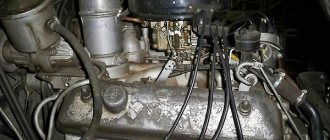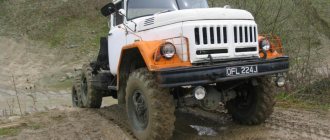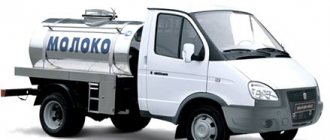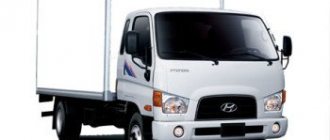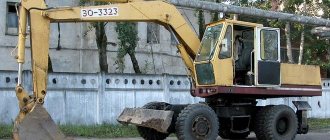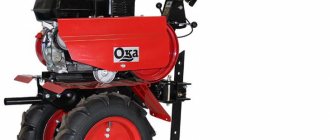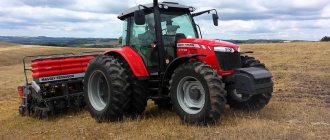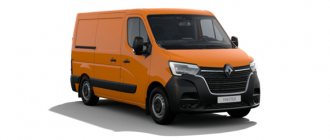Zil dump trucks are produced in a large number of different modifications. These can be articulated dump trucks, as well as semi-trailers, but they are all so high-quality in their characteristics and versatile in their configuration that they have been used to create truck cranes, fire trucks, vans, and tank trucks. The ZIL truck is effective both in off-road areas and in cramped urban conditions. At the height are such important indicators for a vehicle as load capacity and efficiency.
ZIL car assembly
0
In December 1991, the USSR collapsed, and long-term intra-Union ties were broken. In 1992, the era of a market economy began, which no one had previously imagined, as well as privatization, which began at the same time. ZIL was the first in the industry and one of the first among the largest enterprises in Russia to be privatized - on September 23, 1992. Thus, the plant lost budget funding. However, the first General Meeting of Shareholders was held only on April 29, 1994. The General Meeting of Shareholders elected a new management body in the history of the plant - the Board of Directors. Interest in ZIL at that time was based on the former Soviet image of the enterprise. Everyone was counting on good dividends from the plant's shares purchased with vouchers at the check auction. No one imagined that medium-tonnage ZIL trucks would have scant demand in a market emerging from the ruins of the distribution system. As for the automotive sector, by the end of 1991 the technical management of the plant and the chief designer’s service were looking for ways to create new designs of cars demanded by the market: light-duty and heavy-duty. On December 30, 1994, the day when the last ZIL-130 truck (ZIL-4314) rolled off the assembly line at ASK, the first light-duty vehicle ZIL-5301 “Bychok” rolled off the same assembly line, the name of which, by the way, was given by Yu.M. . Luzhkov.
Foundation of the AMO plant
At the AMO construction site
- On August 2, 1916, the foundation stone of the AMO plant took place in Tyufelevaya Roshcha near the village of Kozhukhovo not far from the Moscow River.
- In official historiography, the abbreviation AMO stands for “Automobile Moscow Society”. Nevertheless, in documents of 1916-1917, .
- The state allocated 11 million rubles for the construction of the enterprise to cover the future supply of cars.
- On June 28, 1918, a decree was issued on the nationalization of the plant. At that time, AMO was almost completely completed and equipped.
- At the beginning of 1920, the plant received the first order for the reconstruction of Fiat engines intended for the first Soviet tanks. The order was executed in July of the same year. At the same time, the plant overhauled White trucks and repaired steam locomotives and carriages.
AMO F-15 during the 1924 motor rally
- On November 1, 1924, AMO assembled its first own F-15 truck . On November 7, the first 10 vehicles of this model took part in the Parade on Red Square, and on November 25, the trucks went on the first Soviet test rally.
War
ZIS-5V
With the beginning of the war, like many automobile enterprises in the USSR, ZIS began to fulfill military orders. From the first months, the plant began to produce various tools, dies for the production of weapons and ammunition, castings for tank factories, M-72 motorcycle engines, ammunition, helmets, shovels and much more.
- On July 7, 1941, in order to free up capacity, production of the ZIS-101 was discontinued.
- In October of the same year, a partial evacuation of the automobile plant to the rear began, and production of trucks was suspended. On October 14, the first batch of equipment and specialists left for Ulyanovsk.
- In June 1942, the Moscow Automobile Plant restarted production of trucks. However, wartime difficulties and the evacuation of equipment did not allow the production of the ZIS-5 to be restored in its pre-war version. As a result, the plant developed a simplified ZIS-5V with a wooden cabin, one headlight and brakes only on the rear axle. In addition, captured equipment was repaired at ZIS, and imported trucks were assembled from vehicle kits under the Lend-Lease program.
Studebaker US6 assembled on a ZIS
- In July 1943, the plant resumed production of automobile engines.
- In October 1944, for the successful implementation of military orders, the plant was awarded the Order of the Red Banner of Labor.
- On September 16, 1945, MosZIS was officially transferred to normal working hours. During the war years, the plant assembled about 70 thousand ZIS-5V trucks and 49 thousand imported cars.
Interwar years
Assembly of ZIS-5
- In 1931, production of the AMO F-15 ended at around 6,285 units. It was replaced by a more advanced AMO-3 truck with a carrying capacity of 2.5 tons. At that time, the company already employed 14 thousand people.
- On September 16, 1932, the plant produced the 10,000th AMO-3. The truck was a licensed copy of the American Autocar-5S truck. The vehicle was modernized and completely localized.
- In October 1933, the plant was renamed ZIS (Stalin Plant).
ZIS-101
- In 1933, the plant switched to production of the ZIS-5 car - a modernized AMO-3. The car received an engine with increased power, a completely new gearbox, a reinforced frame, axle and many other improvements. Line production started in 1934, and two years later the plant produced the 100,000th ZIS-5!
- In the early 30s, the cost of a ZIS-5 was 4,686 rubles. For comparison, a worker’s salary at the same time was at the level of 150-200 rubles.
- On November 3, 1936, the ZIS-101, the first passenger car of the Moscow Automobile Plant, entered production. Two years later, the 5,000th car rolled off the assembly line.
- By 1940, almost 40 thousand people worked at ZIS. 55,928 cars and 1,209 buses were produced.
Stagnation in development
Ready-made ZIL-130 for shipment
- In September 1962, the plant began production of ZIL-130. The car turned out to be successful in many ways and quite modern for its time. The one hundred and thirtieth became a real long-liver; it was produced at ZIL until 1994! And in terms of the number of trucks produced, it became the third in the history of the USSR.
- When developing and modernizing the ZIL-130, Soviet engineers studied the design of imported trucks: International R-185, REO F22-R1, Dodge SZ-TA-8, Ford F750, Ford 600 and others.
- The cost of ZIL-130 in 1981 was 3126 rubles, ZIL-131 - 5349 rubles, and ZIL-133GYA - 11560 rubles. For comparison, a worker’s salary at the same time was 190-210 rubles.
KamAZ-2E5410
- On November 16, 1967, a fateful resolution for ZIL was issued by the Council of Ministers and the CPSU Central Committee. According to it, the plant needed to create and test a completely new truck for the Kama Automobile Plant. 1.5 thousand people were involved in this task, including 430 designers. The work was carried out over 10 years, and its result was the creation of a whole family of large-capacity KamAZ trucks. The most modern cars of this class in the USSR at that time. ZIL transferred a very promising car to another plant, essentially being left with nothing.
- In the early 70s, the plant began developing the promising ZIL-169 truck. The car was supposed to receive a ZIL-645 and replace the ZIL-130. But even then the pace of development of the enterprise began to slow down. ZIL-169, which by that time had received the index ZIL-4331, was put into production only in 1986, and diesel even later.
- In the field of development of off-road vehicles, ZIL still remains a leading enterprise in the industry. In 1967, SKB created unique search and recovery vehicles. The theme was developed during the creation of the Blue Bird rescue complexes in 1975.
- In January 1986, the plant switched to production of ZIL-431410 (further modernization of the ZIL-130). Under the hood of the new car was a ZIL-508.10 - an engine with an increased compression ratio (7.1) and a new cylinder head. In addition, 431410 acquired a new hypoid axle and a multi-circuit braking system.
Brake system
The truck has a special braking system that is present on all wheels. These are special drum brakes that operate under the influence of a modern pneumatic system. The main reserve of air mass is located in a special tank under fairly strong pressure. The brakes are brought into service using a water pump and an installed gear. The compressor operates at two thousand revolutions per minute. There are only two air cylinders, each holding 20 liters.
Salon
The ZIL cabin is a three-seater cabin, which is located immediately behind the engine. The seat can be adjusted in height, length, and backrest tilt. Among the main interior options present are:
- Wiper;
- Heater;
- Special device for washing glass;
- The roof of the cabin is equipped with two ventilation hatches.
The cabin is made of solid metal, and the seats are made of soft materials. Everything in it is thought out to the smallest detail, making the interior as comfortable as possible for drivers and passengers. The main instruments and control mechanics are ergonomically located here.
The vehicle is equipped with hydraulic power steering, which significantly increases the overall ease of driving and its safety. If the front wheel accidentally breaks, it will be easy for the truck to stay on the road.
Design
The presented crossover of the ZIL brand is designed in the style of many modern budget-class SUVs. Externally, the model, in particular, is similar to its direct competitors - Hyundai Creta and Kia Seltos. The similarity with Korean crossovers can be seen in the outlines of the body, characterized by sharp transitions and smooth edges. However, despite the above, the Russian-American new product has a unique design that sets it apart from other compact SUVs.
The presented crossover ZIL-131 2021-2022 is, first of all, distinguished by the A-pillars that are heavily tilted back, which turn into an almost flat roof line. The latter is located at a subtle slope in relation to the stern. The compact rear pillars of the ZIL crossover are designed, apparently, with an eye on the Kia Seltos. Under them there is a fold, which not only visually increases the dimensions of the rear part of the body, but also makes the wheel fenders more voluminous.
The smooth hood of the presented new product is framed at the edges by rounded folds, which emphasize the youth design of the SUV. Moreover, as they move towards the front, they seem to go into the body. The edge of the hood in the area of the radiator grille smoothly bends downwards. This design decision, combined with the heavily flared pillars, is likely to have a positive effect on the car's aerodynamic performance.
From full-fledged SUVs, the new ZIL crossover has been replaced by a large rectangular radiator grille, repeating the smooth curve of the front part of the body. It contains several horizontal wide lamellas with cutouts for airflow into the engine compartment. An interesting detail of the front part of the body is the large head optics with two sections of LED lights, above which lie LED DRL strips.
The second notable detail is that the front bumper is visually divided into 3 parts. The central one, as noted earlier, is given over to a large radiator grille, and the two side ones, going deep into the body, contain raised niches for black plastic inserts containing round fog lights. The image of the front part of the body is completed by a protrusion on the front bumper, simulating a splitter.
The Russian new product was equipped with large rims, which is why the developer had to expand the side arches. Along the bottom of the side doors and fenders there is a thin strip of plastic body kit, painted in a contrasting black color. As in the case of the Kia Seltos, the new ZIL crossover has very compact rear windows due to the rising window sill line, which will negatively affect visibility from the cabin.
The food of the presented crossover ZIL-130 2021-2022 is designed in a sporty style. This feature is emphasized by the heavily covered rear window, above which there is a compact wing with an additional brake light. The previously mentioned protrusion, which is located under the support struts, smoothly moves to the stern, forming here a kind of spoiler. Narrow lights with LED strips in the center are attached to it.
The rest of the stern of the presented new product runs almost vertically in relation to the road surface. But because of this protrusion, there is a feeling that the rear part of the body has three-dimensional shapes. The rear bumper recedes noticeably from the body, which is more typical for SUVs than for compact crossovers. The body kit, made of black plastic, contains 2 wide exhaust pipes. This feature indirectly indicates the presence of a powerful engine under the hood of the car. But given how the presented crossover is positioned, most likely one of the pipes is an imitation.
Popular modifications
The following modifications of trucks are made on the ZIL vehicle platform. The ZIL car has a fairly diverse model range:
- Cargo ZIL-130G – transportation of oversized cargo and towing trailers with a total weight category of up to 8 tons.
- ZIL-130V1 is a truck-type tractor, which was originally designed for towing cargo weighing up to 14 tons.
- ZIL-130D1 is a special platform for building ZIL-MMZ-4502 and ZIL-MMZ-555 dump trucks.
- ZIL-130B2 is a platform with a special pneumatic outlet designed for building a tractor used in agriculture.
- The ZIL-130G cargo truck is a platform vehicle with special two-section sides. There is a wheelbase of 4,500 mm and a motor with unique characteristics.
- ZIL model 130D is a platform for a dump truck for narrow construction purposes, having a short wheelbase of 33 cm.
- ZIL-130B is a platform for special agricultural equipment with a total wheelbase of 3,800 mm.
ZIL 130G
All models, without exception, are distinguished by optimal configuration and the ability to function ideally in different climatic conditions.
Positive and negative properties
An increasing number of car enthusiasts are deciding to buy these trucks. From this product you can make a unique car, since there is the possibility of an optimal upgrade. Among other positive factors, one can note such important indicators as the affordable cost of the vehicle, small dimensions, optimal maintainability and maneuverability of the device. If necessary, you can easily find the necessary parts for repairs. The vehicle’s high cross-country ability is based on the presence of a built-in power steering, and the engine also works perfectly.
Among the disadvantages of the machine are the low speed that all-terrain vehicles are able to develop, an imperfect motor and the carrying capacity is also not a record. Due to the old year of manufacture, parts often fail. Despite the sufficiently comfortable conditions in the cabin, it is slightly inferior by the standards of the present time. The seats can be adjusted, but they are not entirely comfortable for modern drivers. The engine in the cab of ZIL vehicles is inaudible; the vehicle and its main modifications move quietly. Over their 40-year history, these vehicles have proven themselves to be durable and very reliable cargo transport, relatively easy to operate and repair. And now on the roads of the country you can find the ZIL and ZIS, recognizable by everyone, which are purchased as a means of solving a large number of different problems.
ZIL body - dimensions and characteristics
The ZIL body of this vehicle can be not only cargo, but also passenger. For this purpose, there are folding benches and the possibility of installing an awning.
| Car weight | 10425 kg |
| Load capacity of ZIL | 6000 kg |
| Maximum speed | 90 (km/h) |
| Engine power | 150 hp |
| Fuel consumption | 30 l per 100 km |
As for the average overall dimensions of the ZiL, its length is 6,672 mm, width - 2,500 mm, total height - 2,400 mm. The volume of the platform is 5.10 cubic meters, and the floor area is 8.72 square meters.

